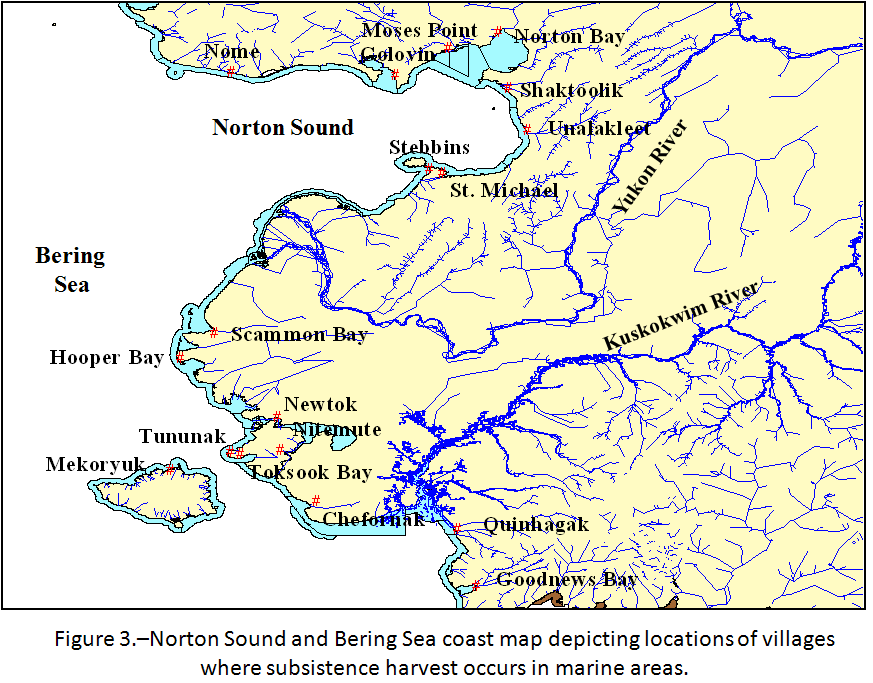One of the most dramatic developments this year has been the record warmth in the Bering Sea and Chukchi Sea. For anyone who has not been paying attention, here are two articles that summarize what has been going on:
As Arctic neared 2019 winter max, Bering Sea was virtually ice-free18 March 2019
https://news.mongabay.com/2019/03/as-arctic-neared-2019-winter-max-bering-sea-was-virtually-ice-free/Record-Breaking Heat in Alaska Wreaks Havoc on Communities and EcosystemsMAY 30, 2019
https://www.smithsonianmag.com/science-nature/record-breaking-heat-alaska-wreaks-havoc-communities-and-ecosystems-180972317/The ocean along the Alaskan coast is already getting up to around 15 Celsius in some places. That's 60 F. Almost warm enough for a cool dip in the water! And this has been having a huge effect inland as well. These past several weeks they have been having highs around 70 F and lows around 50 F along the Yukon and Kuskokwim rivers. That's about 10 F above normal.
This winter, the sea ice is going to have a hard time overcoming all the warmth absorbed in the Chukchi Sea...and then overcoming all of the warmth in the Bering Sea...so much so that I really don't see how the Bering Sea ice can bounce back from this. We may be witnessing the transition of the majority of the Bering Sea from seasonally ice-free to perennially ice-free.
Last year the sea ice extent only made it down the coast of Alaska to roughly the area just barely past the Yukon River delta (see map below). Norton Sound only had the most tenuous tendrils of ice for a couple of days at most. For most of the winter, the ice extent didn't even make it past Nome.
Map of Norton Sound region: Map of Bristol Bay farther south:
Map of Bristol Bay farther south:
How far south along the Alaskan coast will the ice make it in 2020? Going from north to south, here are the options (could we make this into a poll?):
- Not even making it to the Bering Strait (significant open water in Chukchi Sea all winter, no continuous ice in Bering Sea)
- Bering Strait (no continuous ice in Bering Sea, but no significant open water in Chukchi Sea)
- Nome
- Yukon River delta (as far south as Nunivak Island)
- Kuskokwim River delta
- Bristol Bay (Dillingham/Port Heiden)
- Port Moller
- Cold Bay or farther
In the last decade, this is roughly how far the continuous sea ice extent has made it each winter (by continuous, I mean that I am not counting little microscopic pieces of ice in sheltered bays as part of the ice extent unless it is continuous with the rest of the Bering Sea ice pack) :
2010: Port Moller (March 23rd)
2011: Bristol Bay (Dillingham/Port Heiden) (March 4th)
2012: Cold Bay (March 21st)
2013: Bristol Bay (Dillingham/Port Heiden) (March 24th)
2014: Bristol Bay (Dillingham/Port Heiden) (March 19th)
2015: Bristol Bay (Dillingham/Port Heiden) (March 15th)
2016: Kuskowkwim River delta (March 9th)
2017: Port Moller (March 28th)
2018: Kuskowkwim River delta (March 12th)
2019:
Yukon River delta (March 22nd) Edit: Kuskowkwim River delta (Jan 20th)I'm gonna put my bet on
Nome edit: the Yukon River delta area.
That is to say, I think there are better than even odds that Norton Sound won't even ice-over this coming winter. hat-tip to Niall Dollard for pointing out that the ice extent was much farther in January and February of 2019, with Norton Sound solidly frozen and the ice making it all the way beyond the Kuskokwim delta area. I honestly didn't even think to check dates that early in worldview. I've changed my prediction accordingly.
